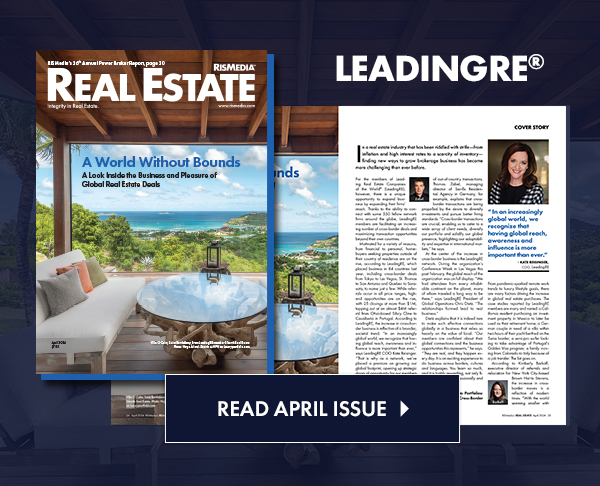Twenty-four percent of U.S. county housing markets were less affordable than their historic affordability averages in the third quarter, according to ATTOM Data Solutions’ Q3 2016 Home Affordability Index. These markets are up from 22 percent of markets in the previous quarter and up from 19 percent of markets a year ago to the highest share since Q3 2009 — when 47 percent of markets were less affordable than their historic affordability averages.
The report analyzed median home prices derived from publicly recorded sales deed data collected by ATTOM Data Solutions and average wage data from the U.S. Bureau of Labor Statistics in 414 U.S. counties with a combined population of more than 203 million. The affordability index is based on the percentage of average wages needed to make monthly house payments on a median-priced home with a 30-year fixed rate and a 3-percent down payment—including property taxes and insurance.
The report also breaks out county-level closing costs, using settlement service rates, transfer taxes and recording fees by ClosingCorp.
Counties in Houston, Brooklyn, Dallas Less Affordable Than Their Historic Norms
Out of the 414 counties analyzed in the report, 101 counties (24 percent) had an affordability index below 100 in the third quarter of 2016, meaning that buying a median-priced home in that county was less affordable than the historic average for that county going back to the first quarter of 2005.
Counties less affordable than their historic averages in Q3 2016 included Harris County (Houston), Texas; Kings County (Brooklyn), N.Y.; Dallas County, Texas; Bexar County (San Antonio), Texas; and Alameda County, Calif., in the San Francisco metro area.
Counties still affordable by historic standards included Los Angeles County, Calif.; Cook County (Chicago), Ill.; Maricopa County (Phoenix), Ariz.; Miami-Dade County, Fla.; and Queens County, N.Y.
“The improving affordability trend we noted in our second quarter report reversed course in the third quarter as home price appreciation accelerated in the majority of markets and wage growth slowed in the majority of local markets as well as nationwide, where average weekly wages declined in the first quarter of this year following 13 consecutive quarters with year-over-year increases,” says Daren Blomquist, senior vice president at ATTOM Data Solutions. “This unhealthy combination resulted in worsening affordability in 63 percent of markets, despite mortgage rates that are down 45 basis points from a year ago.
“Some silver lining in this report is that affordability actually improved in some of the highest-priced markets that have been bastions of bad affordability, mostly the result of annual home price appreciation slowing to low single-digit percentages in those markets” Blomquist continues. “This is an indication that home prices are finally responding to affordability constraints—a modicum of good news for prospective buyers who have been priced out of those high-priced markets.”
Affordability Improves in 37 Percent of Markets Compared to a Year Ago
Affordability improved in 153 counties (37 percent) compared to a year ago, including in the bellwether high-priced markets of Marin County, Calif. in the San Francisco Bay Area (1 percent improvement); Santa Clara County (San Jose), Calif. (3 percent improvement); Kings County (Brooklyn), N.Y. (5 percent improvement); Arlington County, Va. in the D.C. metro area (5 percent improvement); and Maui County, Hawaii (1 percent improvement).
Affordability worsened in 261 counties (63 percent) compared to a year ago, including Los Angeles County, Calif. (2 percent worse); Harris County (Houston), Texas (3 percent worse); Maricopa County (Phoenix), Ariz. (3 percent worse); Miami-Dade County, Fla. (5 percent worse); Queens County, N.Y. (1 percent worse); and King County (Seattle), Wash. (2 percent worse).
Home Price Growth Outpaced Wage Growth in 89 Percent of Counties
Annual growth in median home prices outpaced annual growth in average weekly wages in 368 of the 414 counties analyzed (89 percent). That was a reversal from the trend in previous quarters, when the share of counties with home price growth outpacing wage growth dropped as low as 58 percent in Q2 2016.
Counties where home price growth outpaced wage growth included Los Angeles County, Calif.; Cook County (Chicago), Ill.; Harris County (Houston); Texas; Maricopa County (Phoenix), Ariz.; and San Diego County, Calif.
Counties where wage growth outpaced home price growth—counter to the national trend—included Clayton County (Atlanta), Ga.; Woodbury County (Sioux City), Iowa; Comal County (San Antonio), Texas; Stafford County (Washington, D.C.), Va.; and Peoria County, Ill.
Home Prices Have Increased 10 Times Faster Than Wages Since 2012
Across the 414 counties, the average annual change in average weekly wages was -0.1 percent while the average annual change in median home sales prices was 7 percent. Since bottoming out in Q1 2012, median home prices nationwide have risen 60 percent, while average weekly wages have risen 6 percent during that same time period.
Brooklyn, Santa Cruz, San Francisco Top Least Affordable Markets by Share of Wages
On average across the 414 counties analyzed, average wage earners need to spend 36.3 percent of their income to buy a median-priced home, still below the historic average of 38.8 percent but up from 35.9 percent in the previous quarter and up from 35.8 percent a year ago.
Counties that were least affordable by this absolute affordability standard were Kings County (Brooklyn), N.Y. (123.5 percent of average wages needed to buy a median-priced home); Santa Cruz County, Calif. (111.1 percent); Marin County (San Francisco), Calif. (109.4 percent); New York County (Manhattan), N.Y. (96.6 percent); San Luis Obispo County, Calif. (91.2 percent).
Other counties in the top 10 least affordable were San Francisco County, Calif. (89.6 percent); Maui County, Hawaii (89.3 percent); Napa County, Calif. (84.1 percent); Queens County, N.Y. (83.7 percent); and Monterey County, Calif. (83.5 percent).
Counties that were most affordable by this absolute standard were Clayton County (Atlanta), Ga. (10.1 percent of average wages needed to buy a median-priced home); Rock Island County, Ill. (13.3 percent); Trumbull County (Youngstown), Ohio (15.2 percent); Saginaw County, Mich. (15.4 percent); and Bibb County (Macon), Ga. (15.6 percent).
Highest Closing Costs in NYC, D.C., Bay Area
To determine the average closing costs in the counties that were analyzed, ATTOM Data partnered with ClosingCorp.
“ClosingCorp’s mission is to provide transparency and accuracy to the real estate closing process, so we were particularly pleased to contribute our data to ATTOM Data and its affordability report,” says Carol Crawford, senior vice president of marketing communications at ClosingCorp.
The report analyzed closing cost data from ClosingCorp in the 414 counties. These costs included title, settlement services, appraisal, transfer taxes, recording fees and home inspection, which are common closing costs nationwide.
The report found that the average closing costs across all 414 counties for sales in 2016 were $3,815, representing an average of 1.8 percent of the median sales price in each county and an average of 8.0 percent of the annual wages in each county.
Markets with the highest closing costs were New York (Manhattan), N.Y. ($48,153); Kings County (Brooklyn), N.Y. ($20,832); Queens County, N.Y. ($15,908); District of Columbia ($12,898) and Suffolk County (Long Island), N.Y. ($11,794). Other counties where the average closing cost was above $10,000 were Alameda County (East Bay Area), Calif. ($10,798) and Bronx County, N.Y. ($10,330).
“When it comes to closing costs, there are many nuances. For example, the taxes based on the purchase price in most markets are typically paid by the seller, but there is one notable exception: the so-called ‘Mansion Tax,’ which is prevalent throughout New York and is paid by the buyer,” says Crawford. “The Mansion Tax of 1 percent applies when the purchase price is $1 million or more and it applies to the entire purchase price. Thus, a price increase of $1,000 from $999,000 to $1 million triggers a $10,000 Mansion Tax, which can be a big surprise if you are not a well-informed borrower.”
Markets with the lowest closing costs were all in Missouri: Jasper County/Joplin ($1,720); Jackson County/Kansas City ($1,730); Greene County/Springfield ($1,738); Franklin County/St. Louis ($1,740); and Jefferson County/St. Louis ($1,745).
Least Affordable Closing Costs in New York City, Most Affordable in St. Louis
Markets with the highest closing costs as a percentage of annual wages were all in the New York metro area: Kings/Brooklyn (47.2 percent); New York/Manhattan (42.6 percent); Queens (32.0 percent); Bronx (21.0 percent); and Suffolk (21.0 percent).
Markets with the lowest closing costs as a percentage of annual wages were Saint Louis City, Mo. (3.1 percent); Saint Louis County, Mo. (3.2 percent); Durham County, N.C. (3.2 percent); Jackson County (Kansas City), Mo. (3.3 percent); and Mecklenburg County (Charlotte), N.C. (3.4 percent).
For more information, visit www.attomdata.com.










